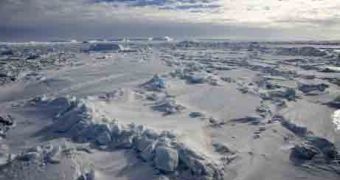Like the growth rings in a tree, the ice layers in a polar sheath records climate variations along the years. In 2004 a team led by Jean Jouzel of the Laboratory of Climate and Environmental Sciences (LSCE) in Gif-sur-Yvette, France, got an ice core from a drill hole in the center of Antarctica recording Earth's climate in the last 800,000 years, 60,000 years further back than other ice drills.
At 3,260 meters (10,695 feet) long, this ice core is not the record (which is detained by the 3,263-meter [10,705-foot] Vostok core) but provide the longest clime history, being obtained in one of the harshest places in our planet. Assessing the deuterium, a heavy isotope of the hydrogen, the researchers tracked down the temperature record in the ancient ice.
"The new climate record covers an additional cycle of glacial change, amounting to 11 cycles in total," said Jouzel.
The team discovered that temperature varied wildly in the past 800,000 years, by as much as 15 degrees Celsius (59 degrees Fahrenheit). The coldest epoch took place around 20,000 years ago, during the peak of the last glaciation, when temperatures were about 10 ?C (50 ?F) lower than the current ones. The warmest period occurred during the last interglacial period, around 130,000 years ago, when the Earth was with 4.5 ?C (8.1 ?F) warmer than today.
"We were able to correlate the record with changes seen in Greenland," said Jouzel.
The team is going to drill even deeper, for pushing further the Antarctic climate record to one million years ago.
"We are now turning toward other regions of Antarctica, where snow accumulation is even lower," Jouzel said.
Others prefer another approach.
"We're getting to a limit on how far ice cores can take us back. There may be ice at one million years old, but will there be a real record in it?" said Martin Siegert, a glaciologist at Edinburgh University.
He believes that sub-glacial lakes detain more clues.
"The lake-floor record starts where the ice core record finishes. It is time to look beneath the ice," he said.

 14 DAY TRIAL //
14 DAY TRIAL //